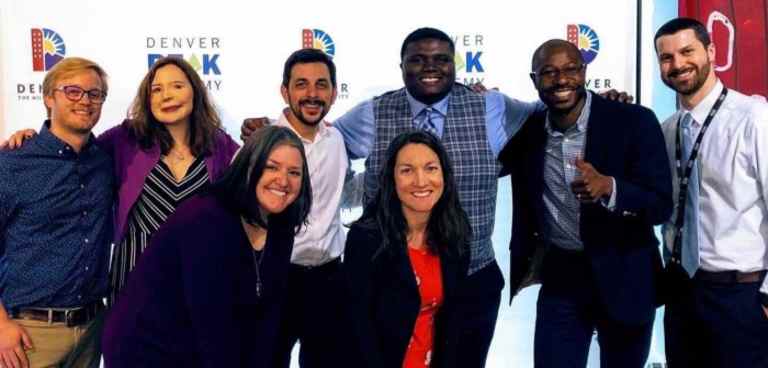A tribute to micro-innovations

Steve Kelman thinks more organizations should take a lesson from the Peak Academy's commitment to incremental change.

The Peak Academy Team
Americans tend to think big. That includes how we think about innovation. In business, we pride ourselves on big, often disruptive innovations, from the telephone to the iPhone. The same holds for government. In the book Innovating with Integrity, on winners of the Kennedy School Ash Center-Ford Foundations Innovations in American Government competition, examples include new ways to promote voluntary compliance with environmental regulation and a program to train nurses to help pregnant low-income and substance-abusing mothers to raise healthy children.
Scholars of innovation in government, however, are quick to make clear that not every change counts as an innovation. “Not all organizational changes qualify as innovations,” one paper writes. “Some are simply too small, obvious or idiosyncratic to warrant much attention.” Another scholar writes, “Innovation must not be simply another name for change, or for improvement, or even for doing something new lest almost anything qualify as innovation. Innovation is properly defined as an original, disruptive, and fundamental transformation of an organization’s core tasks.”
A while ago I was having lunch in San Francisco with Elizabeth Linos, a young and very smart public management scholar at the Goldman School of Public Policy at Berkeley. I was talking with her about a research project I was in the early stages of developing on how bureaucratic organizations might innovate in the face of their reputation for resisting change. I had based the idea on phenomena I had read or heard about from government organizations -- one a state highway department and the other a federal agency working on bird incursions on runways. At the time, I had published two blogs on innovations originating in those organizations. I said I was trying to locate organizations that might be promoting everyday, small-bore innovations.
Linos mentioned an organization in the Denver city government called Peak Academy, which runs training programs on process innovations and then often works with program graduates to develop and implement process innovation ideas. She put me in touch with Drew Brown, a 31-year-old lanky westerner who is a continuous improvement specialist in the Denver Budget and Management Division. It turns out that the Peak Academy was started in 2012 under the administration of longtime Mayor Michael Hancock (who is now serving his final term). The office has a staff of seven. Brown started at Peak Academy in 2016, having previously worked for a renewable energy company.
In the business world, the book Built to Last: Successful Habits of Visionary Companies has made famous the BHAG, or “big hairy audacious goal.” Peak Academy is at the other end of the spectrum, working on behalf of what we might call SMAGs – small modest attainable goals.
Peak Academy’s constituency is frontline people, often in administrative positions such as HR, procurement and close-to-the ground service delivery such as an office of the medical examiner. The gospel it preaches is to look for innovations that relate to your everyday job and that are under your control. Let’s call them “micro-innovations.”
I have now spoken to about 20 civil servants in Denver who have attended Peak Academy training and tried an innovation afterwards. Their innovations mostly fall into two categories: streamlining (mapping a process with many steps and figuring out which ones don’t add value and can be axed or combined) and standardizing (developing procedures for processes within the organization where none existed before). Examples include standardizing the procedure for taking fingerprints of corpses rather than having many different methods, which adds to the time and increases the risk of errors, and eliminating steps a street artist must take to get approval to perform in public.
One may ask whether Peak Academy is setting the bar too low for what qualifies as an innovation. At the extreme, some of these micro-innovations involve replacing an old practice that is so far from the organizational state of the art that one asks why it wasn’t changed earlier. For example, one agency was actually sending out information by U.S. mail and switched to sending it by email; at another agency, the innovation was to discover that a capability the agency had been producing in-house was already available in the agency’s ERP system. At the other end, having wet their feet on micro-innovations, some change agents go on to bigger things, like the Peak Academy grad who has succeeded in reducing average time to hire in their organization from 90 days to 45.
In assessing Peak Academy, it is necessary to ask the “compared to what” question. It is easy to see the innovations Denver employees are undertaking through Peak Academy as unimportant. For most employees, however, the alternative to taking on and implementing micro-innovations is not to pursue BHAGs -- it's to not get involved in any innovations at all. Denver’s Peak Academy is delivering small but real improvements in how the city government works. And it was interesting for me to talk to employees involved in these micro-innovations and to hear the enthusiasm in their voices -- they themselves frequently used the honorific “innovation” to describe what they were doing and felt they were part of something that was making a difference at work.
We should be seeking to build programs for micro-improvements in all of our agencies. I tip my hat to Peak Academy.





